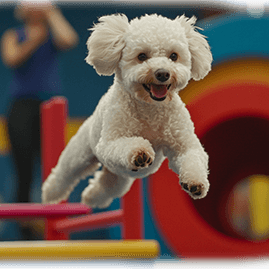How to Train a Labrador Retriever: A Comprehensive Guide
Labrador Retrievers are known for their intelligence, eagerness to please, and friendly demeanor, making them one of the most popular breeds for families and working roles like service dogs. However, their high energy levels and playful nature can be challenging without proper training. In this guide, we’ll walk through the essential steps and tips for training your Labrador Retriever.
Start Early with Socialization
Socialization is key to helping your Labrador become a well-adjusted, confident adult dog. Ideally, socialization should begin when they are puppies, around 8 to 12 weeks old.

- Expose them to different environments – Take them on short walks in parks, around the neighborhood, and near crowds (keeping them safe).
- Meet other animals and people – Make sure your puppy interacts with other dogs, different kinds of animals, and people of various ages to prevent fearfulness or aggression later.
- Introduce new sounds and objects – Household noises like the vacuum cleaner, lawnmower, or doorbell are important to get them used to early.
Basic Commands and Obedience Training
Labradors are eager learners, which makes them great candidates for basic obedience training. You can start with essential commands like sit, stay, and come.
- Sit – This should be one of the first commands you teach. Hold a treat above their nose and slowly move it back over their head. As they look up, their rear naturally lowers into a sitting position. Immediately reward with a treat and praise.
- Stay – After they learn “sit,” teach “stay” by placing your hand in front of their face like a stop sign. Take one step back and return quickly to reward them if they remain seated.
- Come – Teaching “come” is crucial for safety. Start with a leash, call your dog’s name followed by “come,” and reward them when they arrive.
Positive Reinforcement
Labradors respond extremely well to positive reinforcement, such as treats, praise, and toys. This method encourages the behavior you want without creating fear or anxiety.
- Reward good behavior immediately – Timing is key. Give a treat or praise the moment your Labrador performs the correct behavior.
- Use treats as a motivator – Small, soft treats that are easy to chew work best for training sessions. (Amazon affiliate link)
- Incorporate play – Labradors are naturally playful, so incorporating games like fetch as a reward can be just as motivating as treats.

Crate Training
Crate training is important for housebreaking and giving your dog a safe, comfortable space. Labrador Retrievers are den animals, so they naturally feel secure in a well-sized crate.
- Choose the right crate size – Your Labrador should be able to stand up, turn around, and lie down comfortably. (Amazon affiliate link)
- Introduce the crate slowly – Start by leaving the crate door open and tossing a few treats inside, letting your dog explore it at their own pace.
- Create positive associations – Feed your dog meals in the crate and leave the door open so they associate it with positive experiences.
Leash Training
Labradors are known for pulling on the leash due to their high energy, so leash training is a must.
- Use a front-clip harness – This helps reduce pulling without causing discomfort or injury. (Amazon affiliate link)
- Teach them to walk beside you – Start in a low-distraction environment. When your dog starts pulling, stop walking and wait for them to return to your side before continuing.
- Reward loose-leash walking – Keep treats handy to reward your dog for walking calmly by your side without pulling.

Mental Stimulation
Labradors are intelligent dogs, and they can become bored if they aren’t mentally stimulated. Incorporating mental challenges into their training keeps them engaged.
- Puzzle toys and interactive feeders – These toys challenge your dog to figure out how to access treats or kibble. (Amazon affiliate link)
- Teach new tricks – Once your dog has mastered basic commands, teach them more complex tricks like “roll over” or “shake.”
- Agility courses – Labrador Retrievers excel in agility and love a physical challenge. If possible, set up an agility course in your yard or join a local class.
Housebreaking and Potty Training
Labradors are generally easy to housebreak with consistent training. The key is establishing a routine early on.
- Take them out frequently – Puppies need to go outside every 1-2 hours at first, especially after meals and naps.
- Use a cue word – When you take them outside to go potty, use a consistent cue word like “go potty” to reinforce the action.
- Reward immediately – As soon as they finish, reward them with a treat and praise.
Exercise and Energy Management
Labrador Retrievers have high energy levels and require plenty of physical activity to prevent behavioral issues like destructive chewing or hyperactivity.
- Daily exercise – Labradors need at least an hour of exercise each day. This can be a mix of walks, running, and playtime.
- Fetch and retrieve – Labs love to retrieve, so playing fetch is a great way to burn off their energy while strengthening your bond. (Amazon affiliate link)
- Swimming – Labrador Retrievers are natural swimmers, and swimming is a great low-impact way to exercise your dog, especially as they age.

Dealing with Common Behavioral Issues
As energetic and intelligent dogs, Labradors can sometimes develop behavioral issues if not properly trained or mentally stimulated.
- Jumping – Many Labradors have a tendency to jump on people. Teach them to “sit” when greeting people and reward them for keeping all four paws on the ground.
- Chewing – Provide your dog with plenty of chew toys and discourage chewing on household items by using deterrent sprays and supervising their playtime.
- Separation Anxiety – Labradors form strong bonds with their owners and can develop separation anxiety. Gradually increase the amount of time they spend alone, and provide interactive toys to keep them occupied when you’re not around.
Helpful Resources for Training Your Labrador Retriever
- Books – “The Labrador Handbook” (Amazon affiliate link) by Pippa Mattinson offers a thorough guide to raising and training Labradors.
- Local Trainers – If you prefer in-person guidance, finding a certified dog trainer with experience in training Labrador Retrievers can be beneficial.
Training your Labrador Retriever is a rewarding experience that not only helps create a well-behaved dog but also strengthens your bond. With patience, consistency, and the right techniques, your Lab will quickly learn how to be a polite and obedient companion.
Affiliate Disclosure
This post may contain affiliate links, which means I earn from purchases made through links. Please see the privacy policy page for more details.





